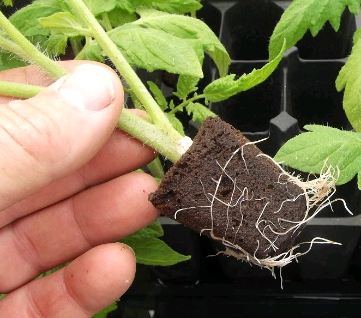Cloning is a very common technique used by a large variety of plant growers. When growing plants from seeds there is an important unpredictability factor in what you might get so cloning ensures that you get a clear genetic copy of the parent and therefore removes a lot of the variability inherent to the growing process when starting from seed. To perform the cloning process most growers use the aid of rooting hormones which are usually sold in the form of a gel at high prices. Today we are going to learn how to make our own DIY plant rooting gel using ingredients that can be easily bought online for a fraction of the cost.
–

–
Rooting gels have basically four ingredients. A rooting hormone (active ingredient), a gelling agent (usually an acrylic acid polymer), a base (needed to increase the viscosity given by the gelling agent) and a preservative (because fungi eat anything). Today we are going to talk about making a rooting gel without any preservative – which is simpler – so don’t make very large quantities because it can spoil after some time (probably will last for a month or so). To make this you will need the following:
- Distilled or RO water
- Indole-3-butyric acid (you can get it here) 0.69 USD/g
- Carbopol 940 (you can get it here) 0.09 USD/g
- Potassium hydroxide (you can get it here) 0.02 USD/g
- Two containers for mixing (one around 60% of the volume you want to make, the other around 120%)
- A scale that can weight with enough precision according to the amount you want to prepare (for 1L you will need a +/- 0.1g scale).
Warning: Potassium hydroxide is a very strong base. Handle with a lot of care wearing protective eye wear and nitrile or PVC gloves. Do not agitate it before opening it since KOH powder is very caustic.
Once you get these ingredients the process is quite simple. For a one liter preparation add 500 mL of water to one container (we will call this one A) and 500mL to another container (which we will call B). Add 3.0g of the Indole-3-butyric acid to the A container along with 0.6g of potassium hydroxide and mix until both are dissolved. Heat the water in container B to 120-140F (48-60°C), stop heating and add 9.0g of Carbopol 940. Mix the water in container B thoroughly, the Carbopol 940 might take a long time to get hydrated and get into solution, stir it until there are no visible clumps (this can take around 15-60 minutes).
Once this process is done wait for B to cool to ambient temperature, then mix A and B slowly (in whichever has the largest container). When you do this the viscosity of the mixture will start to increase exponentially and you will have your rooting gel preparation. The amount of money it takes to prepare 1L is around 3 USD while the most popular rooting gel products online are charging you around 16 USD for 100mL of basically the same thing. This means that you will be saving 98% of your rooting gel costs if you make your own.
There are some other additives – including preservatives and biostimulants – that we could add to make a better product, but that’s a topic for another blog post.





